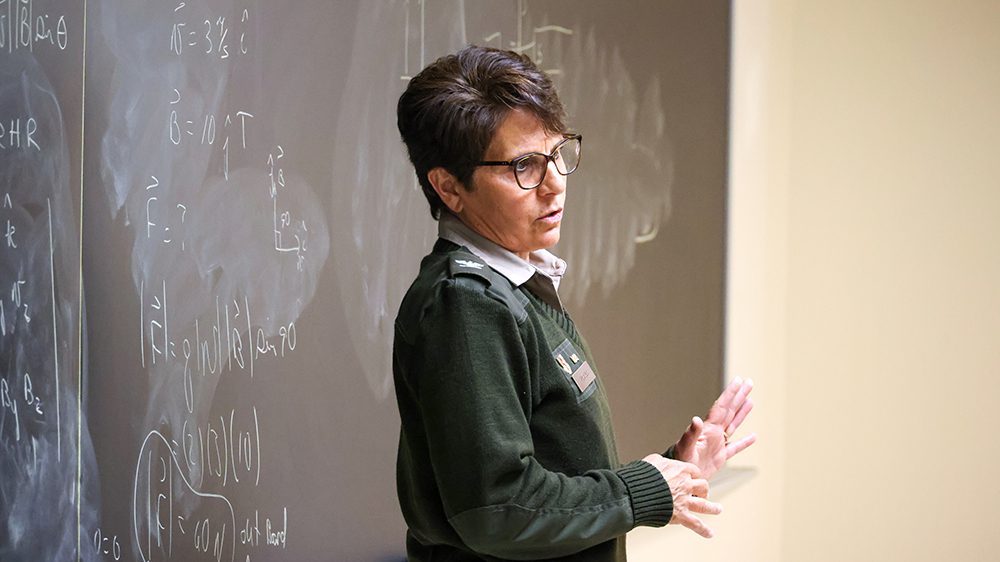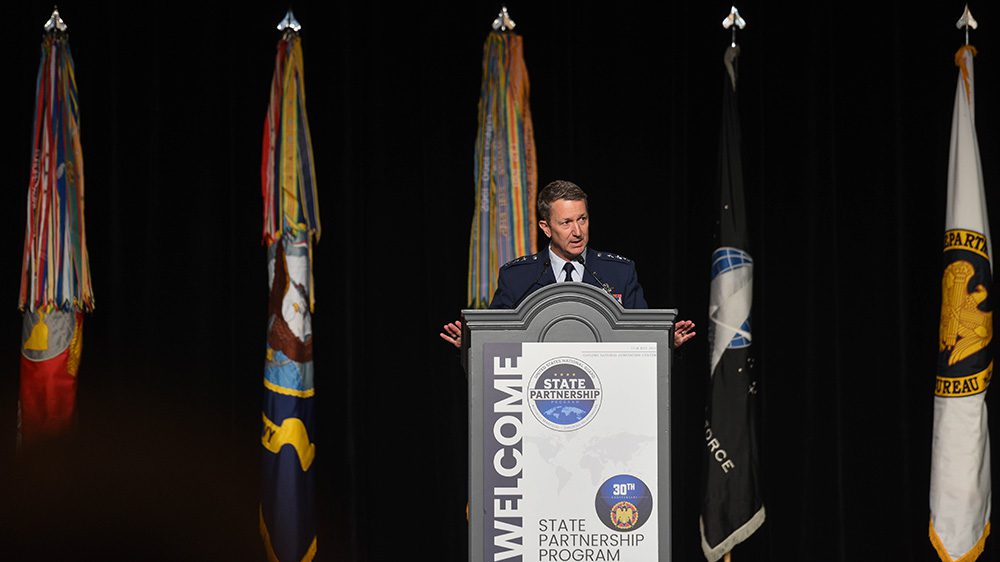Doctor, Army veteran, stand-up comic, reality TV star, and author all rolled into one, retired U.S. Army Col. Robert “Bob” Slay ’69, M.D., is a Renaissance man of many talents. He’s happy to tell you, though, that the foundation of those talents was laid at VMI, even if no one would have predicted that in fall 1965 when he matriculated as “the French rat.”
Now 75 and still practicing medicine in Southern California, Slay grew up in a military family, the son of Marine Corps Col. R.D. Slay. As young Slay was nearing high school graduation, his thoughts turned to two well-known mid-Atlantic schools, and VMI was not among them. Unbeknownst to him, though, the elder Slay was taking counsel from his good friend, Marine Corps Col. J.W.P. “Alligator” Robertson ’50B, who knew of just the place for a wide-eyed youngster with long hair in the 1960s.
When Robertson dropped Slay off on Matriculation Day, his advice was succinct: “Just do what you are told, and don’t give up.”
That advice served him well, even after he wrote, “R.D. Slay, Villefranche, France,” when instructed to put his name and hometown on the back of his rat room chair—a bad choice that Slay recalled drew him an unwelcome amount of “special attention” from the cadre.
“In between pushups, crab crawls, burpees, and racking it in, they asked me to speak French,” he recounted. Slay, though, had an advantage few rats had: He’d already met his dyke before matriculating. That summer, he’d been enjoying the renowned beaches of the French Riviera when he happened upon a group of American boys playing volleyball. A conversation ensued, and that’s when Slay met John Turner ’66, a member of the Keydet football team who would go on to be elected to the VMI Sports Hall of Fame.
“John was amazed that I was going to be a rat when I had other choices,” recalled Slay. “But as he stated, ‘If you’re that dumb, you will need some help, so you will be my dyke.’ I didn’t have a clue what that meant but agreed.”
With the help of Turner and Slay’s roommates—K.C. Woodroof ’69, Joe Naselli ’69, Jamie Patton Totten ’69, and Bill Blandford ’69—Slay not only made it through the Rat Line but his entire cadetship, graduating with a Bachelor of Science degree in biology and ranking near the top of his class within the major. A Distinguished Military Graduate, Slay was also awarded the superintendent’s cup for his activities while a member of the Cadet Publications Board.
Strong in both quantitative and qualitative skills, the future Army doctor finished his cadetship with enough English courses to graduate with a minor in that discipline. During his 1st Class year, he was even the chief editor of the Institute’s newspaper, The Cadet, a turn of events that Slay said “irritated the English majors, having a biology major get the job.”
The love of storytelling is often inborn, of course, but in Slay’s case, there was one individual who propelled him toward honing his craft. While living in Beaufort, South Carolina, during his high school years, Slay encountered a great teacher, Gene “Cooter” Norris. Norris taught both Slay and a young man who would go on to become one of the giants of 20th century Southern fiction: Pat Conroy, author of “The Great Santini,” “The Water is Wide,” and other well-known novels.
Under Norris’ guidance, his students read the works of Thomas Wolfe, Joseph Conrad, and J.D. Salinger, among others.
“He would always sneak us books that South Carolina parents didn’t approve of,” Slay commented. “Cooter was the first guy who told me, my own parents didn’t necessarily say this, but Cooter was the first guy who said, ‘You know, Bob, you can do whatever you want to do if you’re willing to work for it and go for it and keep smiling and always be optimistic.’”
It was that never say die spirit, instilled even before matriculation and deepened during his cadetship, that would lay the foundation for success in multiple endeavors.
“I am forever indebted to VMI for giving me the discipline and tenacity to accomplish major goals in my career,” Slay noted.
“The only way to get through life is to have that discipline and self-care. VMI really teaches you that. They teach you that you’ve got to put the time in, and you’ve got to be willing to make the sacrifices to succeed and go after your goals.”
Col. Robert “Bob” Slay ’69, M.D.
Near the end of his cadetship, the lure of the world of words was so strong that Slay applied and was accepted to the highly prestigious Columbia University Graduate School of Journalism. Taking the often-repeated advice that the best way to learn the craft of writing is to write, though, Slay declined to attend.
Besides, the Army had offered him a full-ride scholarship to medical school, and Col. Robert “Doc” Carroll, the Institute’s legendary biology professor, had steered Slay and several other graduating biology majors to the Medical College of Virginia.
Carroll, in fact, was so well respected that just coming out of the VMI biology department was often enough to guarantee admission to MCV, as Slay quickly learned when he went to Richmond for an interview with the dean and was granted a place in the incoming class on the spot, while applicants from Ivy League schools were held in suspense.
At MCV, Slay deepened his bonds with the five brother rats who’d likewise chosen MCV.
“We always studied together,” he noted. “We clicked. So, it was a great thing to have that VMI connection. There’s no question about it; the brotherhood is strong.”
But it wasn’t just study-buddy BRs who got Slay through medical school. It was the discipline and focus instilled during his years in barracks.
“The only way to get through life is to have that discipline and self-care,” Slay stated. “VMI really teaches you that. They teach you that you’ve got to put the time in, and you’ve got to be willing to make the sacrifices to succeed and go after your goals.”
During his 20-year career in the U.S. Army Medical Corps, Slay had many assignments and adventures, but one was at the forefront of the nation’s consciousness in the late 1970s. He served as a senior medical officer in the Anti-Terrorist Delta Force during Operation Eagle Claw, an April 24, 1980, failed attempt to rescue the hostages trapped in the American embassy and other areas in and around Tehran, Iran.
The rescue effort went awry and resulted in the deaths of eight service members; the mood on the flight home was somber. Slay recalled the event as “one of the saddest days of my life,” and to this day, he has a clear memory of tears streaming down the camouflaged faces of battle-hardened Delta Force members as they flew home, forced to leave their dead comrades behind.
But Slay has much happier memories of the Middle East, as well. During the 1980s, he spent time in Israel and Jordan as a consultant. While in Jordan, he played tennis with King Hussein, who Slay recalls as “just a nice guy” but a heavy tobacco user, to the point that the king “chain-smoked cigarettes while we played” and kept ashtrays at the ends of the tennis court nets.
After his 1989 retirement from the Army, Slay took his passion for emergency medicine to the civilian world, working primarily in hospitals in San Pedro and Marina del Ray, California. In interviews and comedy routines, Slay calls the ER “the Trailways station of medicine, where there’s something for everybody. … If you think you’ve seen it all, you haven’t seen it all.”
That constantly changing variety of patients and situations has provided endless fodder for stories, and as a natural storyteller, Slay was drawn years ago to National Public Radio’s The Moth StorySLAMs, which are open-microphone storytelling contests held worldwide.
From there, he launched into more stand-up comedy routines, featuring humorous and sometimes almost wildly unbelievable outtakes from his day job, and he’s also on YouTube as “The Funny ER Doc.”
Eventually, Slay took his talents to the small screen with 18 appearances on the reality-based TV show “Untold Stories of the ER.” Not surprisingly, he wrote most of the episodes and plays himself on the show.
With many of the storylines on “Untold Stories,” the old adage, “Truth is stranger than fiction,” comes to mind. There’s an episode with fraternity brothers coming to the ER because all of them have been passing blue urine and another in which a fisherman comes in with an alligator snapping turtle attached to the carotid artery area of his neck. Moments later, a game warden tells Slay that it will be illegal to kill the turtle in the process of helping his patient, so his only option is to paralyze the reptile with drugs so its muscles will relax.
“When I woke up that morning, I had no idea I’d be intubating a snapping turtle,” he comments on the show.
With his fast-paced life and family commitments—he and his physician wife, Dr. Gayle Brenneman, are the parents of two children, and now, two grandchildren—Slay didn’t make his own health a priority until he got a wake-up call. At 55, weighing 228 pounds and with a body mass index of 35, Slay was diagnosed with pre-diabetes and high blood pressure. He and Gayle, his battle buddy, decided at that time to radically change their diets and begin exercising. Their success with losing weight and keeping it off inspired Slay to write his book, “The Battle Buddy Diet.” He never expected the small volume to become an Amazon bestseller, but that’s exactly what happened, as the market was ready for a book about how spouses can lose weight together.
Today, Slay is still working in emergency medicine with no immediate plans to retire, but when the COVID-19 pandemic hit, he switched from working in the ER to urgent care.
“I still get to see patients, and that’s my love,” he stated. “I love seeing patients. I love taking care of them. I give every one of them my cellphone number to text me if anything changes. I just love people. And I’ve always thought it was a privilege to take care of them.”
Spoken like a true citizen-soldier.
-

Mary Price Development Writer/Communications Specialist
The development writer plays a key role in producing advancement communications. This role imagines, creates, and produces a variety of written communication to inspire donors to make gifts benefiting VMI. Utilizing journalistic features and storytelling, the development writer will produce content for areas such as Annual Giving, stewardship, and gift planning.




